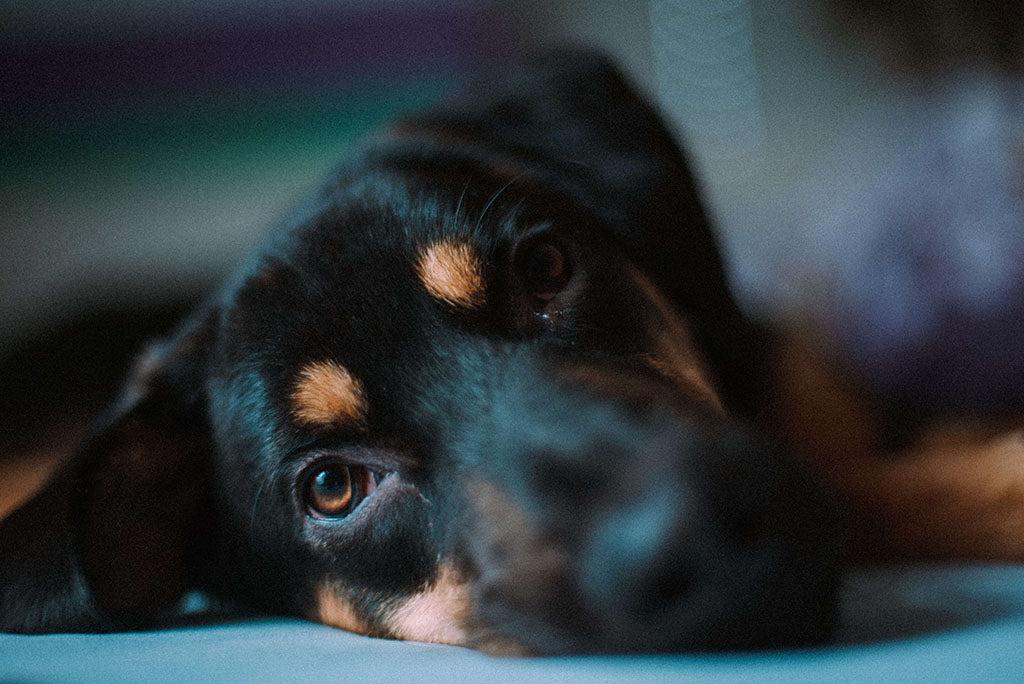Did you know dogs have three eyelids? But, why dogs have extra eyelids? In this blog, we’ll discover exactly why dogs have a third eyelid, the function of their extra eyelids, and what you need to do if your dog’s third eyelid becomes unhealthy.
Does My Dog Have A Third Eyelid?

Have you ever been admiring your sleepy pup and noticed an extra eyelid slip over their sleepy eye? Well, that’s your dog’s third eyelid!
That’s right! Dogs have an extra eyelid on each eye. Now, this may have been something that you only thought happened to reptiles, but both our canine and feline friends also have this wonderful evolutionary quality.
What Is Your Dog’s Third Eyelid?
Also known as the nictitating membrane or the haw, the third eyelid is actually different from the other two. A dog’s third eyelid is hairless, thin, and constantly moist; completely different compared to the other two that sit on the top and bottom of their eyeball – just like ours (but without the fur!).
All dogs, no matter what their breed, will have a third eyelid – unless they have had it surgically removed. When your dog closes their eye, the third eyelid will slide horizontally, covering nearly half of their eyeball. The coloring of your dog’s third eyelid depends on their coloring, normally ranging from a greyish cream to translucent – however, if this eyelid has a reddish tone, it could be a sign of infection or inflammation.

What Does The Third Eyelid Do?
So, why do dogs have extra eyelids? As said above, this third eyelid is an evolutionary quirk that has been passed down over thousands of years. Now, although the eyelid doesn’t completely cover the eye like other animals’, the vestigial membrane has a range of purposes…
Just like the top and bottom eyelids, the third keeps moisture in the eye, while also helping to keep dirt, dust, and debris out. Plus, this extra lid protects the vulnerable inner corner of the eye, cleaning away unwanted contaminants from the eyeball.
What Is The Third Eyelid Gland?
Just like us, our dogs need to keep their eyes moist and clean – which means they also have tear glands that produce cleaning liquid to the eye. However, unlike us, dogs have two tears glands… The second is called the nictitans gland or the third eyelid gland!
The third eyelid gland actually produces nearly 60% of your dog’s tears – which means it plays a very important role in keeping your pet’s eyes moist, wet, and healthy. If the eye is too dry, or the gland isn’t producing a normal amount of tear film, the eye can become extremely uncomfortable, left vulnerable to illnesses such as conjunctivitis.
Problems With Third Eyelid
Unfortunately, their extra eyelids can bring some health problems. A healthy third eyelid shouldn’t be seen very often – so if you notice it frequently, your pup may have a problem…
Cherry Eye in Dogs
Cherry eye in dogs is a condition that occurs when the third eyelid gland prolapses. This is where the ligaments keeping the third eyelid in place break, causing the lid to move and become visible. This is where the condition gets its name from – as it looks similar to a cherry.
Now, although cherry eye can look extremely painful, it doesn’t cause your dog any pain – however, it can be uncomfortable and, unfortunately, lead to bigger issues.
Once the third eyelid gland has prolapsed, it will be in an incorrect position, meaning that it can not function correctly. And, as mentioned before, the third eyelid gland is responsible for 60% of the moisture in your pup’s eyes! Without this tear film production, the eye will be left extremely vulnerable, as it won’t be able to clear external irritants.
To Conclude…
If you do start to see your dog’s third eyelid or you notice that they could be developing cherry eye, it’s best to seek help from your veterinarian. They will know what your pup needs to help get them back to full health.
Sources
“Cherry Eye in Dogs (Third eyelid gland prolapse)” North Downs Specialist Referrals https://www.ndsr.co.uk/specialist-referral-service/pet-health-information/ophthalmology/cherry-eye-in-dogs
Author Kidd, Randy, “Structure of the Canine Eye” Whole Dog Journal, July 2019
https://www.whole-dog-journal.com/health/structure-of-the-canine-eye/
 B
B



